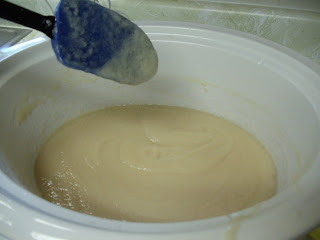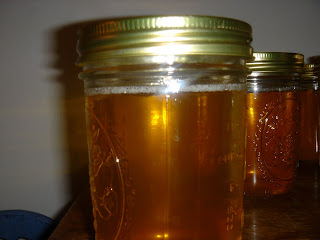My body creme is made with pure vegetable oils and beeswax. I used grapefruit seed extract as a natural preservative. I have had many a conversation with those that think they must add a chemical preservative to lotion or body creme because it is made with water. Introducing water to the vegetable oils could then allow bacteria, yeast, and mold to grow without some type of preservative.
After perfecting my body creme I sent it to BioScreen Testing Services, Inc. They are a certified USP (United States Pharmacopeia)testing company which provides Preservative Effectiveness Validation Tests. They introduced mold, yeast, and several types of bacteria to my body creme and tested it after 14 days and again in 30 days to see if my natural preservative was able to prevent the growth of those introduced organisms and reduce them effectively to meet the USP criteria of acceptance for the Antimicrobial Effectiveness Test.
The USP testing cost me $900.00 and I thought to myself, if my body creme doesn't pass this test there goes $900.00 down the drain! I waited for 6 or 7 weeks before I received the results and I was elated to find my body creme passed the USP testing with flying colors! I called BioScreen and spoke to the manager to review the report they sent me so I understood it fully. After all it came from a lab and I wasn't familiar with all the scientific vernacular. I was told that my natural preservative held up to their challenge testing and that I have a wonderful natural product. I was also told that a lot of products that have chemical preservatives actually fail this challenge testing. I was literally jumping up and down in excitement!! So, to those that say you have to use a chemical preservative I beg to differ and I have the documents to prove it!
So, I will get off of my soap box for now, no pun intended! Below are some pictures that show the steps I went through today to make Citrus Body Creme.
I don't need to wear protective eye ware or face mask to make body creme as there are no caustic chemicals used to make body creme. I gather all my oils and additives, equipment, and jars before I start anything.

I sterilize my jars that I will use to pour the body creme into. I have tried using pump containers but my body creme is too thick and clogs the pump. I like thick cremes so I chose not to thin the creme down but to use jars instead.

I use a Stand Mixer to mix my oils and water together. I use one pot for the water mixture and a second pot for the beeswax and oil mixture.

I measure out the beeswax first.

I then measure the amount of distilled water I will need.

I put the measured beeswax into the pot I will add the vegetable oils to. I pour the distilled water into another pot. I put the heat on under the pot with the distilled water so it can come to a boil.
I measure the amount of Olive Oil I need for my body creme and then add the oil to the pot with the beeswax.

Here I measure the amount of Borax needed. Borax (Sodium Borate) is a white crystalline mineral that is used as an emulsifier. An emulsifier binds the oil and water together to make the body creme.

I add the Borax to the pot of water. I then measure the amount of vegetable glycerin I need and add this to the pot of water with the Borax in it.

I stir the mixture in the water pot and let it simmer at a consistent temperature. I then add the remaining vegetable oils to the pot with the beeswax and olive oil.
Once the oil and water mixtures are both at 165 degrees I can then combine them. I turn the stand mixer on low and slowly pour the hot oil mixture into the bowl.

I then slowly add the water mixture into the bowl that already contains the oils.

I keep the stand mixer on a low setting to prevent splashing. Occasionally I need to scrape down the sides of the bowl. As the mixture thickens I can then turn the mixer up to a higher speed. This is necessary so the oils and water come together and no longer separate.
When the mixing bowl is still warm to the touch I then add my citrus essential oil blend.

After the essential oils are added to the mixture I turn the mixer up higher so the essential oils incorporate with the body creme. This whole process of mixing the water and oils together takes about 25 to 30 minutes. I test the outside of the mixing bowl to see if it is now cool to the touch. You can see how the mixture has become thicker and is now a white color.

I can then pour some of the mixture into a measuring cup and fill my jars.

I weigh each jar as I am filling it to be consistent so that the Net Weight information on the labels matches the amount of product in the jars.

The finished product!!

My website shows a picture of my body creme in a plastic jar. I started using these recycled glass jars for my retail locations. I like the fact that the glass jars are made from recycled glass and customers can bring the empty jar back to the retail location and receive $1.00 off their next purchase. I can then sterilize and reuse the glass jars with new lids.
If you haven't tried my body creme you may want to think about trying it. It is thick and luscious and has no artificial ingredients. I believe it is pure perfection!!
Relax. Luxuriate. Enjoy.
Coleen




















